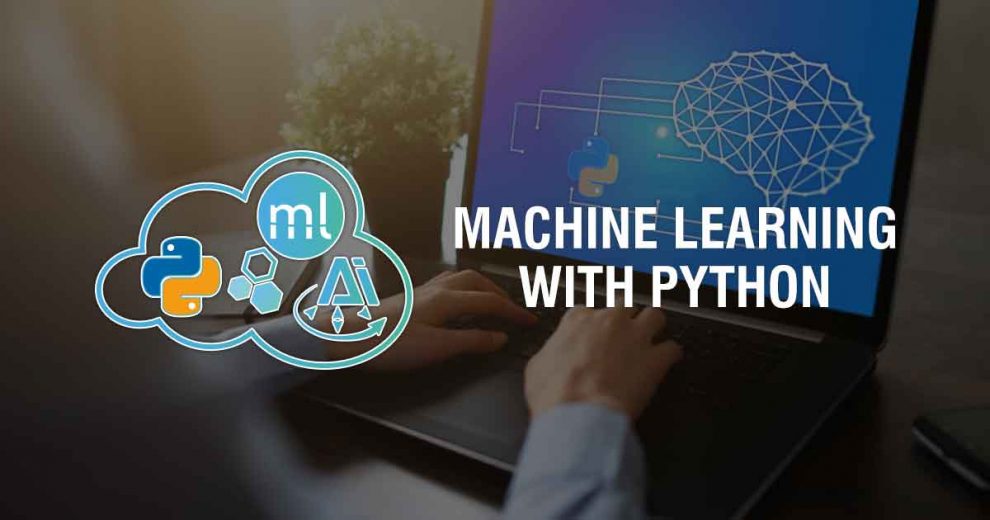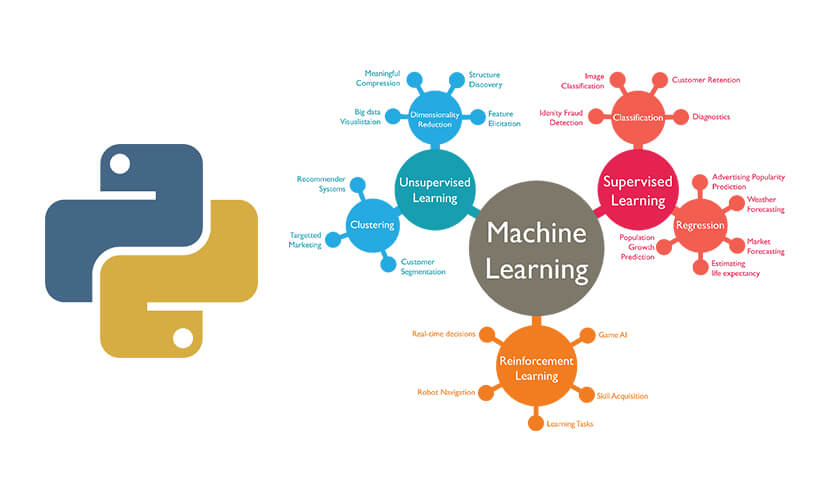In the near future, the demand for employees capable of working in the machine learning field will increase exponentially. With a significant increase in self-driving cars, voice-controlled speakers, face detection software, and many more technologies, machine learning has become an important skill for the future market as this software is built on a machine learning framework.
Great learning provides software developers with a comprehensive course on machine learning with python. This skill helps develop tools and frameworks, which can be very helpful in the development of successful software.
Table of Contents
- What Are The Challenges In Machine Learning?
- Understanding The Process Of Machine Learning
- Python-Based Tools For Data Analysis
- The Role Of The Data Scientist
- Importance Of Jupyter Notebook As A Web Interface For Visualizing Data Analysis
- Library Of Advanced Machine Learning Algorithms And Methods
- Need of Data Scientist in Current Market Scenario
What Are The Challenges In Machine Learning?
Finding a proper model and training the algorithm are the two biggest challenges to develop a solution. Algorithms which use linear regression are quite simple to train, but the complexity increases for the algorithms which are based on a machine learning framework. Algorithms designed for machine learning are based on complex mathematics as these algorithms require additional hyperparameters to execute a solution.

To train algorithms, data plays a very important role. Finding and selecting appropriate data which could be used to train algorithms helps the solution to execute properly and effectively. Collecting data specific to the need of the algorithm is not always easy. Once the data is collected, it can be provided as input to the respective algorithm, which will result in the execution of the solution when provided with new input values.
Understanding The Process Of Machine Learning
There is a significant difference between developing machine learning models and traditional computer programs. The solution is developed in response to the need created by the customer. The need depends upon various factors and problems, which have to be carefully analyzed to develop a solution that can satisfy the customer. After understanding the basic needs of the customer, an algorithm is designed which can be trained to develop a solution. Once the algorithm is designed, training data is selected, which can train the algorithms to execute solutions for new input values. Questioning, observing, understanding, and implementing are the skills that one has to master to develop solutions successfully.
Also Read
Python-Based Tools For Data Analysis

To understand why python is required for this field, let’s first understand the role of data scientists in machine learning. Python is the most commonly used programming language by the data scientist for developing applications based on machine learning framework because data scientists are closely related to scientific and research communities where R and Python are widely used. Also, they have developed scientific libraries based on python, which could be used directly for developing solutions based on machine learning framework. Also, important developments like Jupyter Notebook, an interactive web-based python shell, is the current, de facto standard in data science.
The Role Of The Data Scientist
Developing applications based on a machine learning framework consists of many tasks that data scientists perform. If one has to become a data scientist, they should have a background in mathematics and statistics and be proficient with programming and data modeling skills. Data scientists understand and select data sources. They can obtain important insights from the selected data as they have efficient and well-structured data-mining techniques. This helps in the selection of the appropriate algorithm which can be used to develop successful solutions for the customers.
Importance Of Jupyter Notebook As A Web Interface For Visualizing Data Analysis
Jupyter Notebook is a web-based user interface that has a command-line python interpreter and enhanced visualization capabilities. It works by integrating the code and then generating an output into a single web page that combines code, explanatory text, and visualizations as the output is plotted in-line, which allows immediate data visualization and iterative development and analysis. Exploring data and developing, training, and testing machine learning models can be done using a notebook.
The algorithms can be fed into the input cells. The output is generated in the output cell. An input cell can be executed by pressing Ctrl+Enter. These input cells are editable in nature. Manipulation and visualization of data can be done easily, with the help of utilities provided by the data frame. Some aiops tools like Robotic Data Automation uses Jupyter Notebooks to power their AIOps studio and provide insights and visualizations on the data.
Library Of Advanced Machine Learning Algorithms And Methods
Logistic-regression-based algorithms that are used in the development of applications require numeric values. To develop these applications, it is important to convert all the strings and category values into numeric values. Feature extraction is how the values used to develop machine learning models are converted into numeric values. The algorithm can use a vectorized representation of the given input. Functions can be designed to convert raw input values into a vector representation, which then act as input for the designed algorithm of the respective solution, extract_core_features() method, and other methods for executing the task as mentioned above.

Data scientists play a very important role in developing the functions which can be used for the feature extraction process. For example, auto-text recognizing applications also use a feature extraction process. Special functions are designed, which then can be used to convert the input into the vectorized form. The converted vectors act as raw input for the designed algorithm used to generate appropriate solutions.
Need of Data Scientist in Current Market Scenario
Looking at the current market scenario, having a career as a Data Scientist is very promising, as many big enterprises, as well as small start-ups, are starting to rely on applications based on machine learning frameworks for day-to-day needs. Having the knowledge of data mining techniques will provide you with the extra boost that you need to make a successful career in machine learning as the need for a data scientist is increasing exponentially in today’s IT market.
Building a strong foundation is very important because understanding the basics helps to grasp the tougher topics more easily. Great learning does an excellent job to provide a strong foundation for beginners by providing free tutorials on machine learning with python, consisting of detailed and well-planned video lectures designed to target the important topics.
This brings us to the end of the blog on machine learning with Python. We hope that you enjoyed this concept. Happy Learning!






